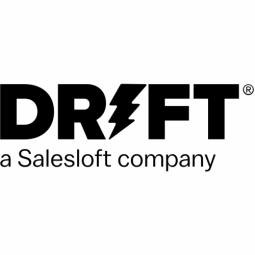Download PDF

Drift
Overview
HQ Location
United States
Year Founded
2015
Company Type
Private
Revenue
$100m-1b
Employees
201 - 1,000
Website
Company Description
Drift helps thousands of customers across the globe translate conversational data and buyer behavior into deeper relationships, more pipeline and more revenue. Its human-centric, AI-powered platform listens, understands and learns from buyers to deliver personalized experiences and recommendations at every touchpoint. Drift is creating a world where AI works for humans to turn conversations into relationships.
IoT Snapshot
Drift is a provider of Industrial IoT platform as a service (paas), analytics and modeling, functional applications, sensors, application infrastructure and middleware, and networks and connectivity technologies, and also active in the aerospace, apparel, cement, cities and municipalities, education, equipment and machinery, national security and defense, oil and gas, packaging, retail, telecommunications, and transportation industries.
Technologies
Use Cases
Additive Manufacturing
Behavior & Emotion Tracking
Chatbots
Construction Management
Cybersecurity
Fraud Detection
Intelligent Packaging
Process Control & Optimization
Public Transportation Management
Real-Time Location System (RTLS)
Supply Chain Visibility
Tamper Detection
Time Sensitive Networking
Traffic Monitoring
Transportation Simulation
Visual Quality Detection
Functional Areas
Industries
Services
Technology Stack
Drift’s Technology Stack maps Drift’s participation in the platform as a service (paas), analytics and modeling, functional applications, sensors, application infrastructure and middleware, and networks and connectivity IoT Technology stack.
-
Devices Layer
-
Edge Layer
-
Cloud Layer
-
Application Layer
-
Supporting Technologies
Technological Capability:
None
Minor
Moderate
Strong
Case Studies.
Case Study
Park Place Technologies: Transforming Customer Engagement with IoT Chatbot
Park Place Technologies, a provider of proactive and predictive data center support and maintenance, was facing a challenge with their live chat system. The live chat was only available during certain hours, which meant they were missing out on potential conversations with prospects in different time zones. Additionally, they were unable to engage visitors who used their End of Service Life (EOSL) library page as a reference resource and then left the site without any interaction. The company needed a solution that could engage prospects 24/7, tap into new lead sources, and improve the speed of lead to opportunity and lead to close.
Case Study
Employment Hero Enhances Customer Experience with Drift
Employment Hero, a rapidly growing startup based in Sydney, Australia, was faced with the challenge of providing an exceptional customer experience. The company, which offers a suite of powerful employment tools to over 80,000 businesses worldwide, wanted to engage buyers on their terms. They used digital marketing strategies to attract prospects to their website, but they needed a way to interact with these prospects once they were on the site. They wanted to be fully aware of the customer's location, activities, buying stage, and preferred engagement channel. The challenge was to find a solution that would allow them to engage with customers in real time, track and monitor their behavior on the site, and make the sales cycle more efficient.
Case Study
State Street Global Advisors' Digital Transformation with Drift
State Street Global Advisors (SSGA), the investment management division of State Street Corporation, faced a significant challenge in adapting to the digital transformation demanded by their clients. Traditionally, SSGA relied heavily on in-person interactions to sell their services. However, they realized that their clients were increasingly seeking a digital experience where they could conduct their own research, ask questions on their terms, and make most of their purchases digitally. This shift was further accelerated by the COVID-19 pandemic, which made video and live chat the primary channels for interaction and sales, while in-person meetings and related sales activities declined sharply. SSGA needed a software solution to support this digital transformation and meet their clients' changing needs.





